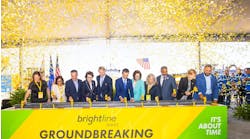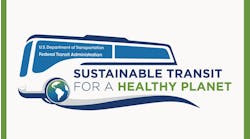The San Francisco Municipal Transportation Agency (SFMTA) announced Sept. 30 that it will receive grant funds from the Federal Transit Administration’s (FTA) new Ladders of Opportunity Initiative. These funds will allow Muni to add twelve, 60-foot buses to help meet the growing demand of the city of San Francisco’s transit needs, address existing crowding, improve service reliability, and increase economic opportunity by improving access to jobs and services.
“New larger buses will help us expand service for a growing San Francisco. Thank you to Secretary Foxx and the Department of Transportation for their more than $9 million investment in our City’s public transit system,” said Mayor Ed Lee. “While these new vehicles are very important to Muni’s fleet, the infrastructure they run on is equally important, and this November, voters have the opportunity to approve a $500 million transportation bond that will provide critical infrastructure improvements, including $358 million dedicated to infrastructure projects that will make Muni faster, more frequent and more reliable.”
“These investments in transit will reduce crowding and congestion, improve service, and open new roads of economic possibility-creating jobs and jumpstarting the middle class,” said House Democratic Leader Nancy Pelosi. “Strong and efficient public transit is essential to the future of our cities, and transit-first San Francisco continues to lead the way for the nation. This Ladders of Opportunity grant will help us to ensure that all San Franciscans have access to the rapid and reliable bus service they need.”
The SFMTA will be able to convert routes that are currently serviced by 40 foot buses to 60 foot buses. Upgrading routes to 60 foot vehicles is a cost effective way to increase capacity while minimizing increased operating costs. By operating efficiently and ensuring adequate and reliable vehicles, the SFMTA will further improve its service performance and provide a more convenient and comfortable experience for customers.
“Transportation is about more than getting from one point to another--it’s about getting from where you are to a better life,” said U.S. Transportation Secretary Anthony Foxx. “The Ladders of Opportunity grants will help communities to offer better access to jobs and schools and allow citizens to gain the life skills they need to achieve their goals.”
The SFMTA is aggressively pursuing replacement and rehabilitation programs on all buses, light rail vehicles, and historic streetcars. These programs directly support the agency’s two-year budget, focusing on maintenance and infrastructure improvement.
“We are doing everything we can to improve service now, while growing our system to meet the needs of future ridership,” said Ed Reiskin, SFMTA director of transportation. “We will continue to work aggressively to replace the aging fleet as we have more than 300 buses that need to be replaced over the next several years. These new, longer buses will increase reliability and make for a more spacious ride.”
The new 60 foot buses are projected to be in service by end of spring 2015.
The Ladders of Opportunity Initiative makes funds available to public transportation providers to finance capital projects to replace, rehabilitate, and purchase buses and related equipment and to construct bus-related facilities. The SFMTA was one of 24 recipients to receive part of the $100 million dollar grant.
Funding for FTA’s Ladders of Opportunity Initiative is drawn from recovered/remaining discretionary grant funds originally available prior to the enactment of MAP-21, as part of FTA’s Bus and Bus Facilities Program. FTA will cover up to 80 percent of the total project cost; a 20 percent local match is required. The new Ladders of Opportunity Initiative helps connect San Francisco residents with local workforce training and employment centers and other vital services.


